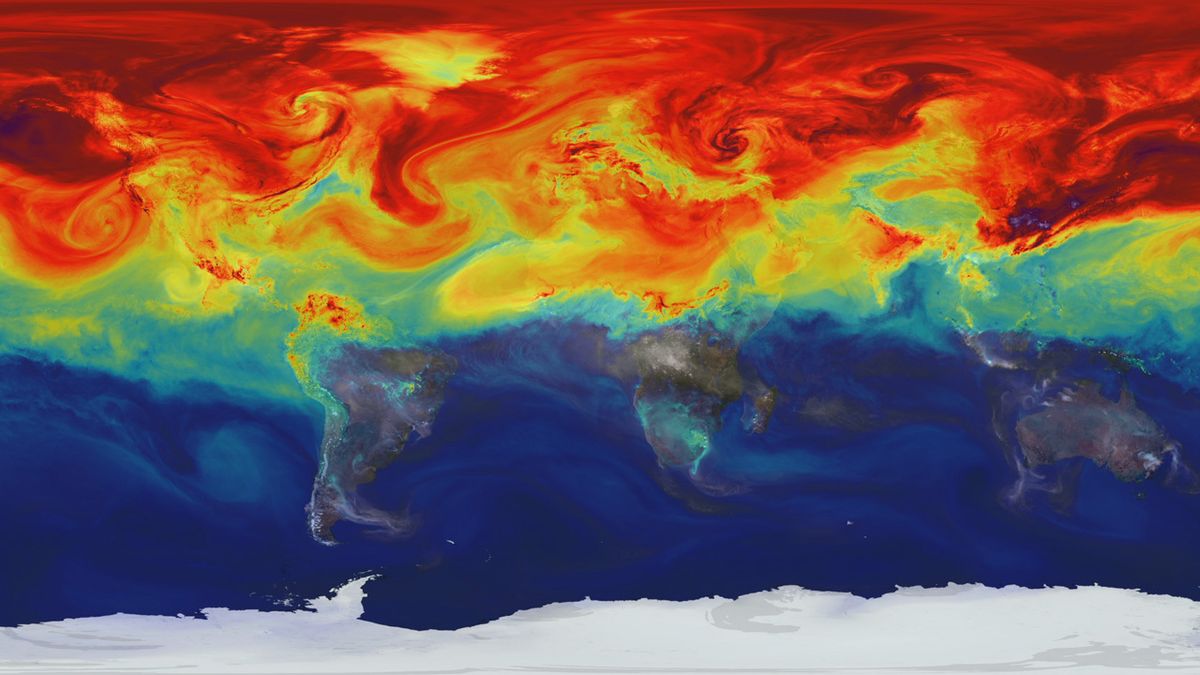
More than 99% of scientific papers agree that humans are the cause of climate change, and thousands of scientists have signed a paper stating that ignoring climate change would yield "untold suffering" for humanity. Climate change was not always on everyone's radar. When did humans first become aware of the dangers of climate change?
Spencer Weart, a historian and retired director of the Center for History of Physics at the American Institute of Physics, told Live Science that scientists began to worry about climate change at the end of the 1950s. It was just a possibility for the 21st century, but seen as a danger that should be prepared for.
Climate change warnings have only increased since the scientific community began to unite for action in the 1980s. These recent warnings are just the tip of a larger problem; people's interest in how our activities affect the climate has been going on for thousands of years.
Satellites can see climate change signs.
According to Weart's Discovery of Global Warming website, people have debated whether draining swamps or cutting down forests would bring more rain to the region.
The ancient Greek debates were the first to discuss climate change. It wasn't until a few millennia later, in 1896, that Swedish scientist Svante Arrhenius became the first to imagine that humans could change the climate on a global scale. Adding carbon dioxide to the atmosphere could warm the planet, according to calculations published in The London, Edinburgh, and Dublin Philosophical Magazine and Journal of Science.
The work was built on the research of other 19th-century scientists, such as Joseph Fourier, who believed that Earth would be cooler without an atmosphere.
Arrhenius' climate change predictions were correct. The term "greenhouse effect" refers to the greenhouse gases released by human activities that trap radiation from the sun and hold them in the atmosphere to increase temperature. Arrhenius' work was not widely read or accepted at the time, nor was it intended to serve as a warning to humanity; it can be viewed as such only in hindsight. At the time, his work simply recognized the possibility of humans influencing the global climate and for a long time, people viewed warming as beneficial.
There was some coverage of fossil fuels in the general media, according to a 1912 article first published in the magazine Popular Mechanics. The article, which ran in a few newspapers in New Zealand and Australia later that year, noted that burning coal and releasing carbon dioxide could increase Earth's temperature in a few centuries.
Why the 1950s?
The scientific opinion on climate change wouldn't change until 60 years after Arrhenius realized it. In 1957, a scientist named Roger Revelle published a paper in the journal Tellus that said that the ocean won't absorb all of the carbon dioxide released in humanity's industrial fuel emissions and that carbon dioxide levels in the atmosphere could rise significantly. Three years later, Charles Keeling published a study in Tellus that showed an annual rise in carbon dioxide levels. Scientists began to raise concerns about the impact human-related emissions could have on the world with carbon dioxide levels known to affect the climate.
Climate change is being highlighted as a potential threat to species around the world. "Scientists began in 1988 to insist that real action should be taken," Weart said. At the Toronto Conference on the Changing Atmosphere, scientists and politicians from around the world gathered to address what was seen as a global threat to Earth's atmosphere, with calls to reduce emissions and acid rain.
The fact that fossil fuel companies and ideologists opposed to any government action were effective in obscuring the facts and blocking action made most scientists think action was necessary by the 1990s. Human inertia and unwillingness to do anything without immediate benefits for themselves are normal.
Live Science published the original article.
